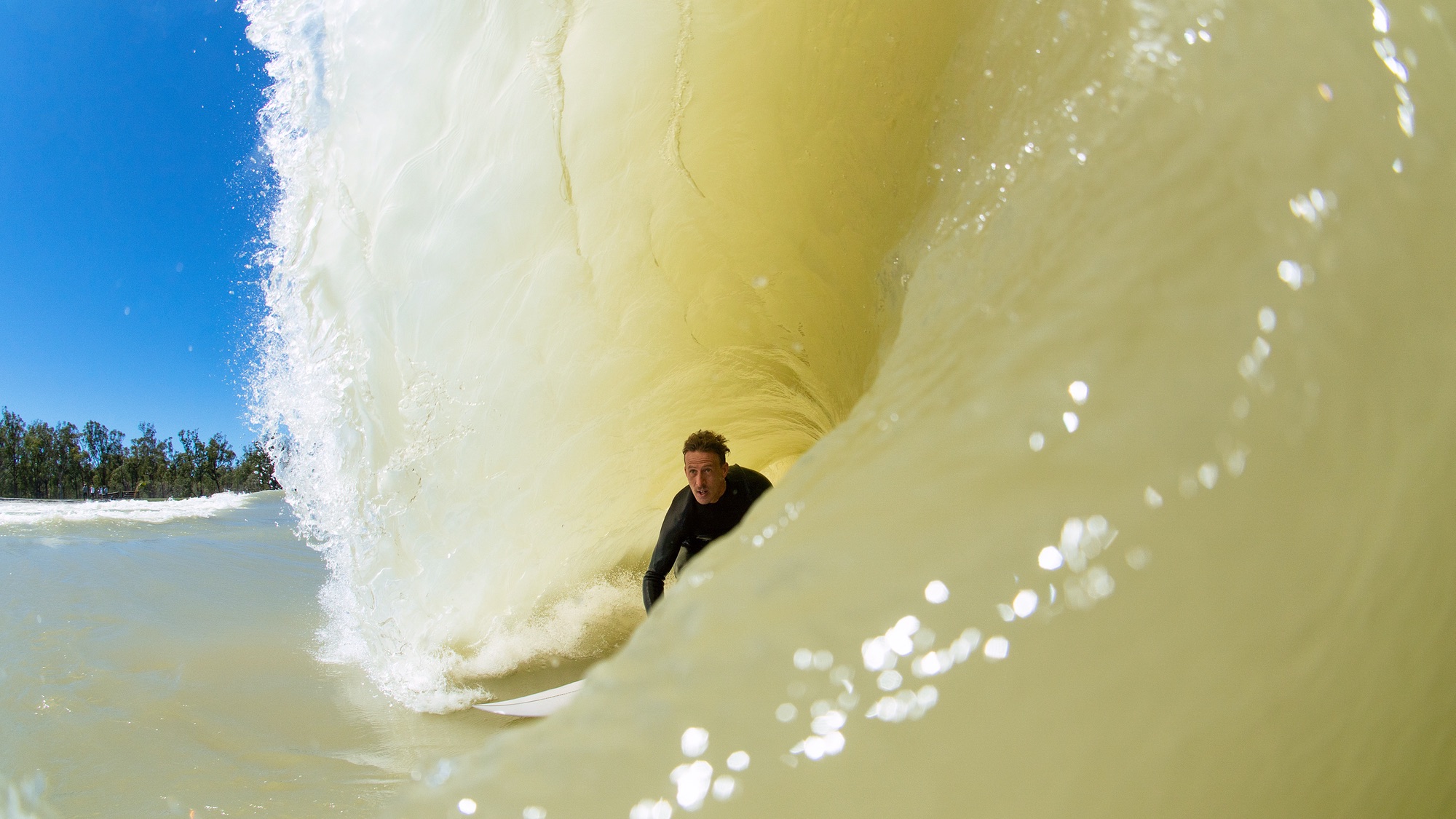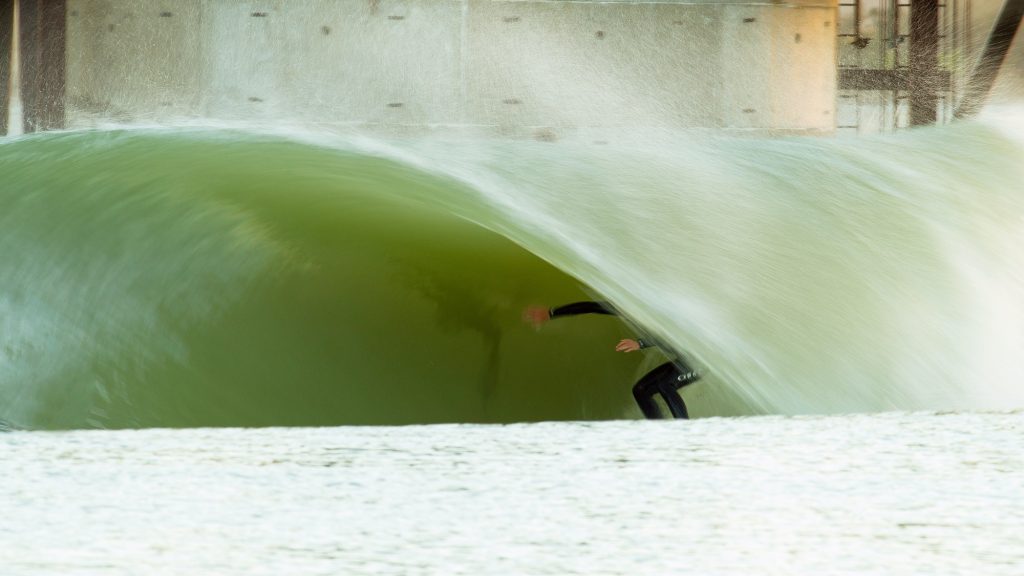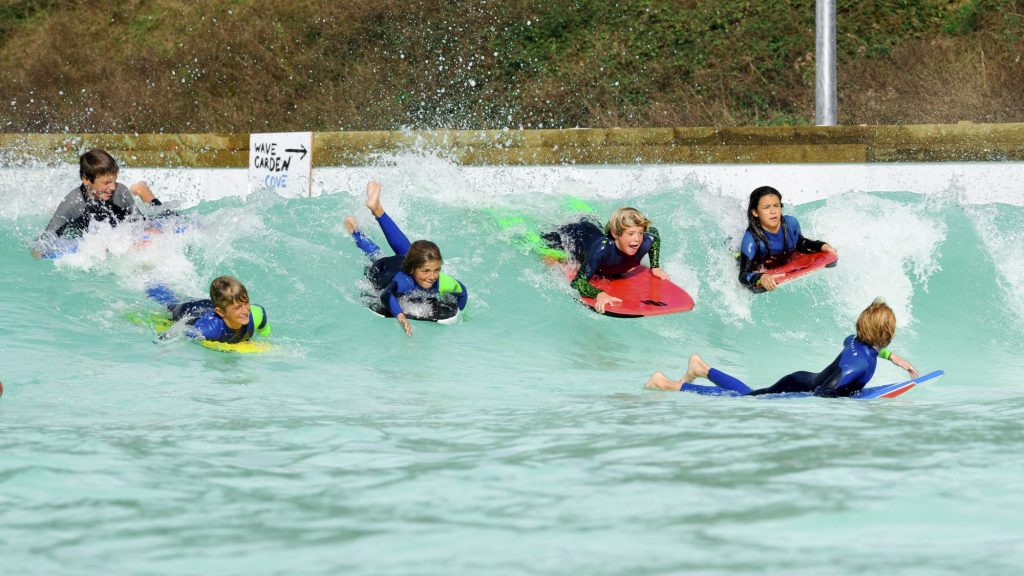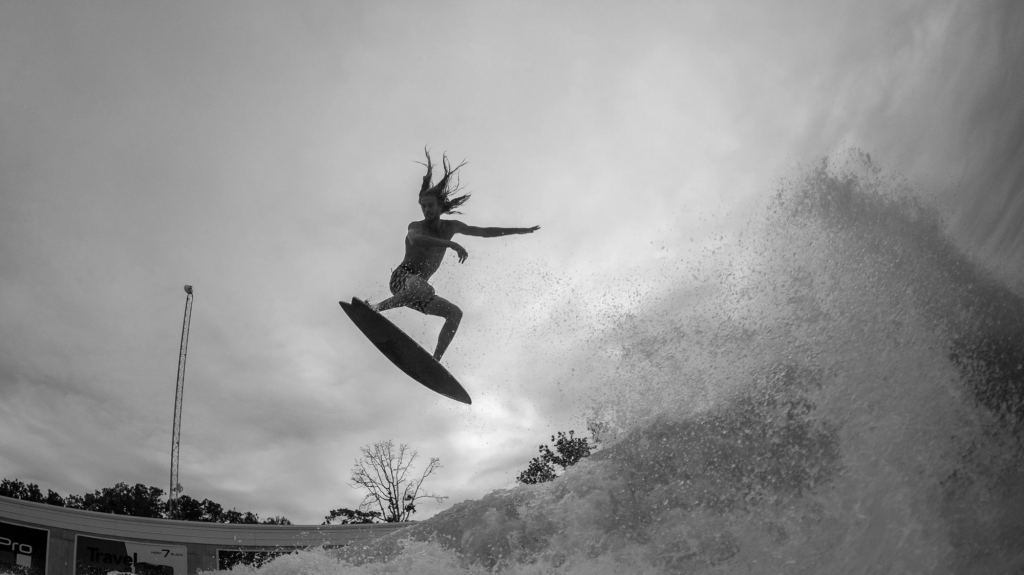How big can surf get in a wave pool?

Does size matter? When it comes to wave pools, it really isn’t the size that counts; it’s definitely what you do with it. Once you start to ramp up wave size, all sorts of factors come into play: currents, dissipation, public safety, power consumption and pool integrity, to name but a few. Let’s face it, the majority of surfers are most comfortable in the waist to head-high range, meaning it’s quality and quantity that matter most (further reading on this here).
But of course, we’re still curious. Who does have the biggest wave, and what will the future bring for those big-wave chargers amongst us? We got in touch with some of the industry’s leading providers of traveling wave tech to find out just how big the surf can get in a wave pool.
How do the existing traveling wave pools measure up?
The Wavegarden family all offer maximum wave faces of around 2.0m at their respective locations. Similarly, the Perfect Swell-powered Waco Surf and Surf Stadium Japan have bookable sessions with wave faces in the 1.8-2.0m range. Their smaller footprint SkudinSurfAD can produce waves of up to 1.2m. Currently, the biggest wave open to the public can be found at Surf Ranch, where the Kelly Slater Wave Company will deliver you a 2.4m wave face.
However, for the lucky few who can secure an invitation, the biggest wave on the block today is created by Australian steam-punk revivalists, Surf Lakes. Their XL ‘Island’ test facility can pump out faces exceeding 2.4 meters and does so over a daunting concrete slab. The 2.4m wave is created using a 4.3m stroke of their plunger. At commercial maximum, the plunger will operate at 5.5m, so expect a significant increase in size and power in the future. Surf Lakes have recently announced that they will demolish their existing wave pool to make way for a publicly accessible facility in its place, so watch this space.

Why aren’t the waves in wave pools bigger?
We got in touch with Wavegarden head honcho Josema Odriozola to find out what’s limiting the size of these waves. Josema was keen to point out that the Wavegarden technology is readily scalable and capable of making bigger waves, but this would come at a cost.
“Raising the height of a wave by 0.6 meters increases the power required by two,” said Josema. “This is independent of the technology: anybody who knows how to calculate the power of a wave will be able to verify this — it is the law of nature. As the cost of the machinery is proportional to the required power, the cost of the wave machinery would therefore also potentially double, regardless of the technology.”
Along with the added energy consumption, there is the issue of all that water moving around in a confined space.
“Larger waves also require more water in the surf lagoon, and this could be as high as three times more water to gain half a meter in wave height.”

Josema said that once you factor in the increased cost, the environmental impact of elevated power demand and a probable decrease in overall user satisfaction, the notion of big-wave pool surfing comes into direct conflict with the company’s core values of sustainability and inclusivity.
Endless Surf’s engineer extraordinaire Clement Ginestet is also not a big believer in designing big-wave lagoons. It’s not just the cost and size of the lagoon that puts him off, it’s the impact on the small waves too. “If I design a lagoon for 3m waves (which would have to be much deeper at the wave generation point) and I want to make a wave of +/- 1m for beginners, this wave will have to travel the majority of the pool before starting to break,” said Clement. “Ultimately, there will be a minimum wave height you can make in this lagoon. There is a fine balance between bigger wave height for competition and smaller wave height for beginners and first-timers.”
That being said, Clement has already started tinkering with his tech and is confident he can push past the 2.0m barrier, just by playing with how the water moves in their pneumatic chambers. Endless Surf is now entering the construction phase on several projects, so stay tuned for updates.

So what is in development?
Somewhat unusually for a test facility, Surf Lakes started with an XL demo version. They’ve also developed an XXL model alongside their smaller ‘standard’ commercial offering. This supersized iteration proposes a ‘Code Red’ option with a 5.0m face and full barrel — spectacular but certainly not for the faint of heart.
Surf Lakes are in early discussions for two XXL facilities.
“Development could leap ahead if someone wanted the XXL as an Olympic venue,” said Aaron Trevis. “Having the equivalent of Pipeline or Teahupoo ready at the push of a button would be brilliant entertainment.”
What does the future hold for big wave pools?
If you ask Surf Loch’s Tom Lochtefeld, the sky’s the limit. He sees no reason why waves of 6 meters or more couldn’t be created. In fact, he’s done the modeling, has the tech, planned the pool and just needs a like-minded financer to come along and pull the trigger.
Though the demand may not be there for the everyday surfer, a wave pool that can cater to the masses and be dialed up to eleven does have commercially viable potential. These venues could gain considerable attention and media exposure from the ability to run serious waves for competitions and special events.
With wave-making technology growing ever more efficient, the players in the wave pool market are all competing to be the next big thing. That next big thing could well be big waves, so keep your eyes peeled for Pipeline coming to a neighborhood near you.
Related Coverage
